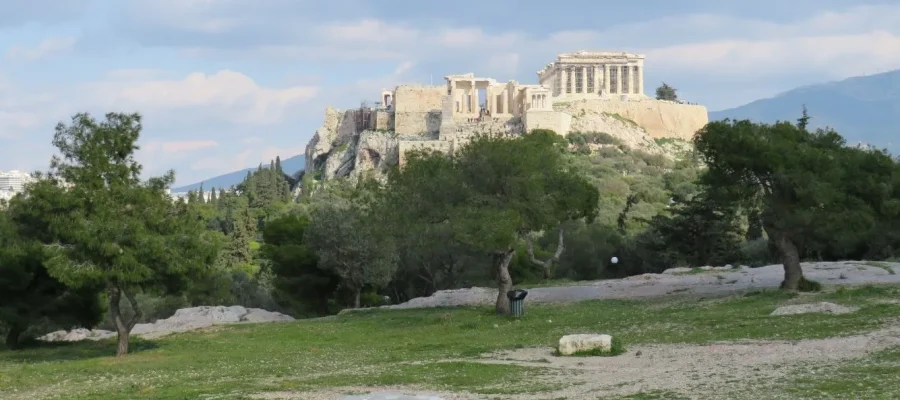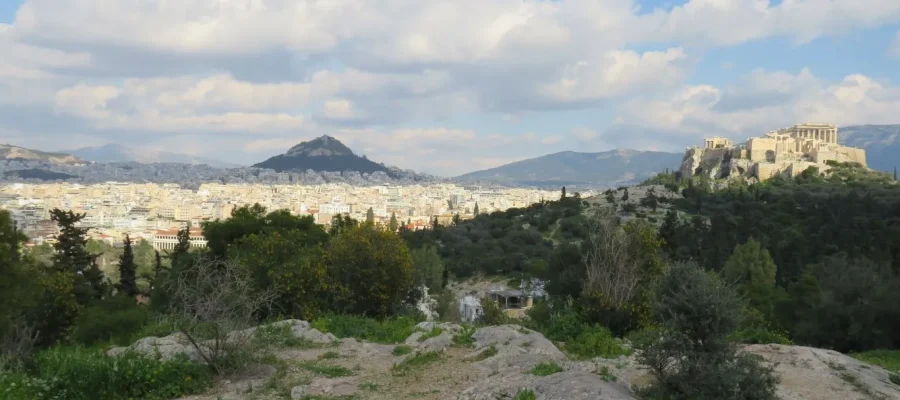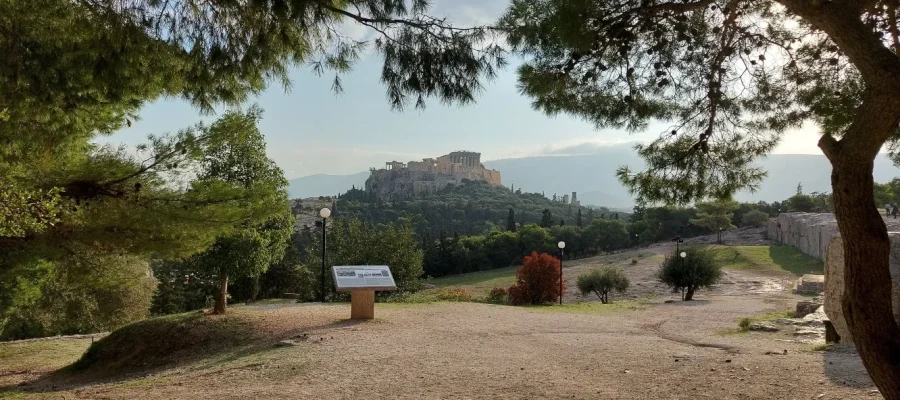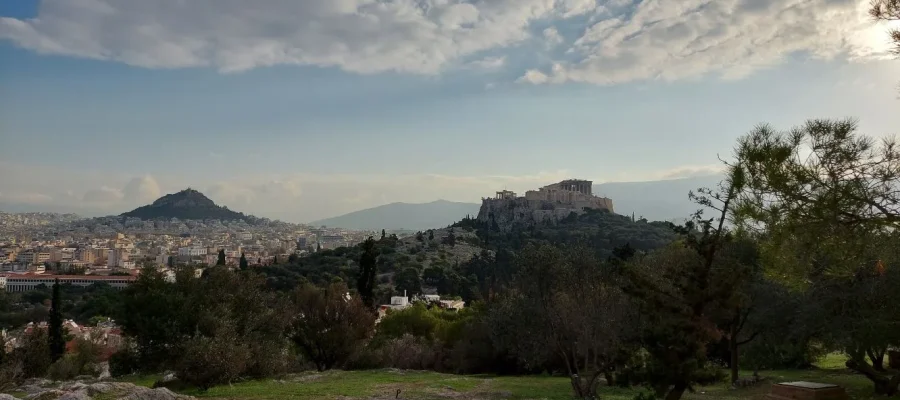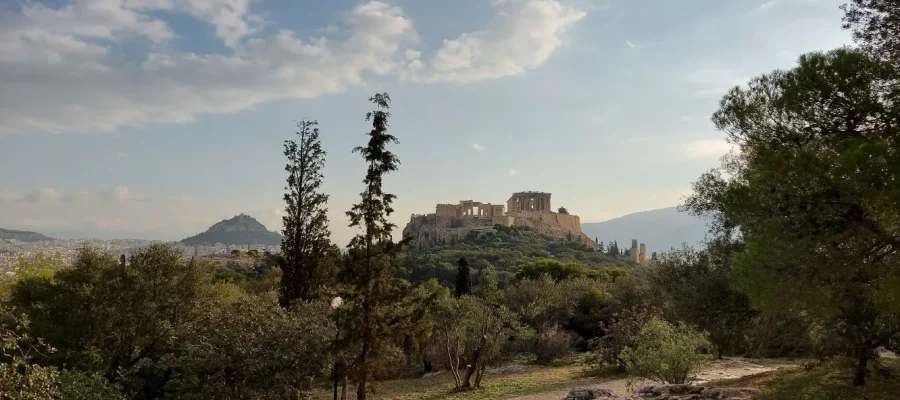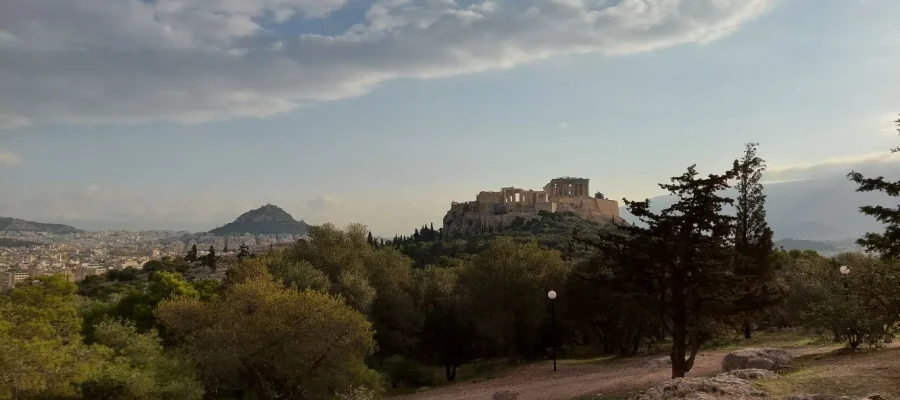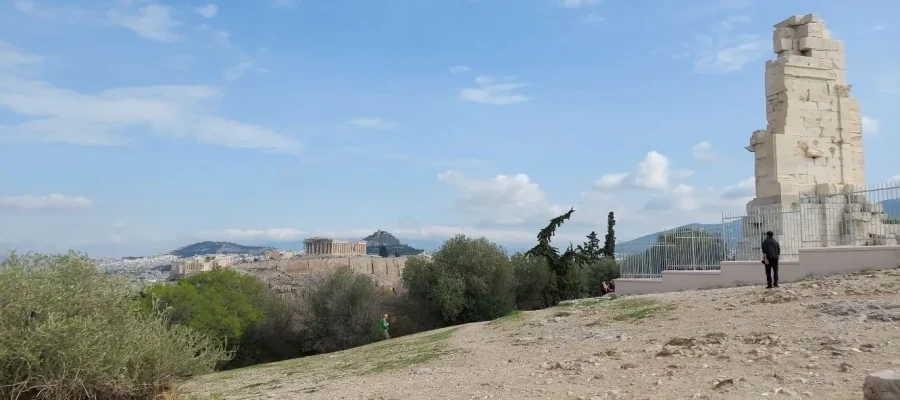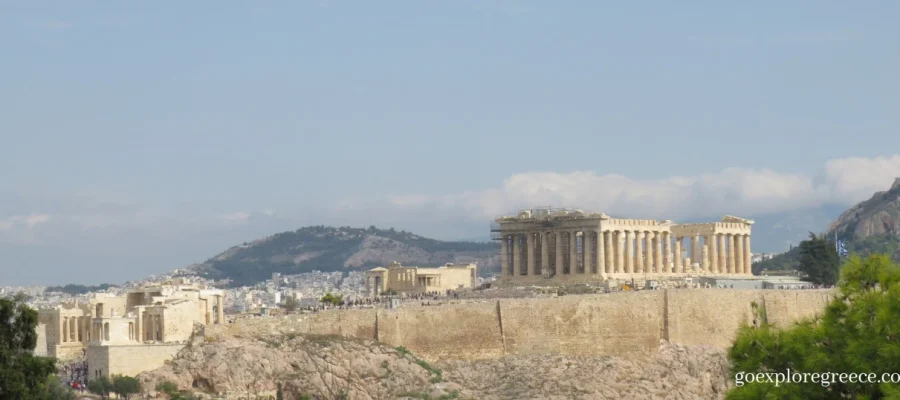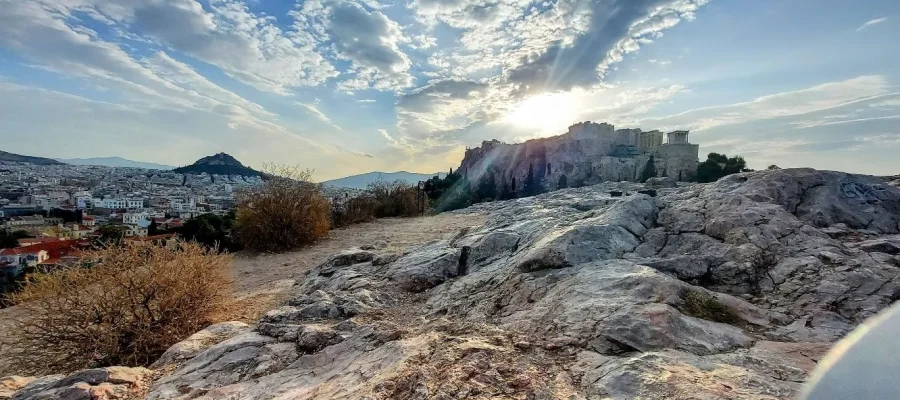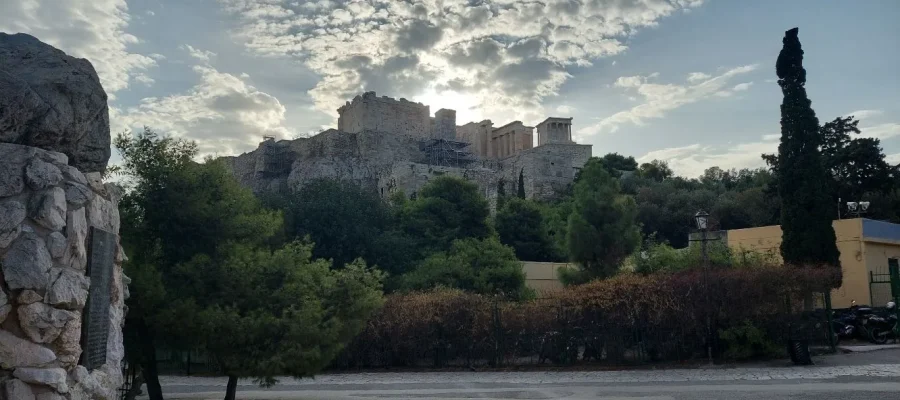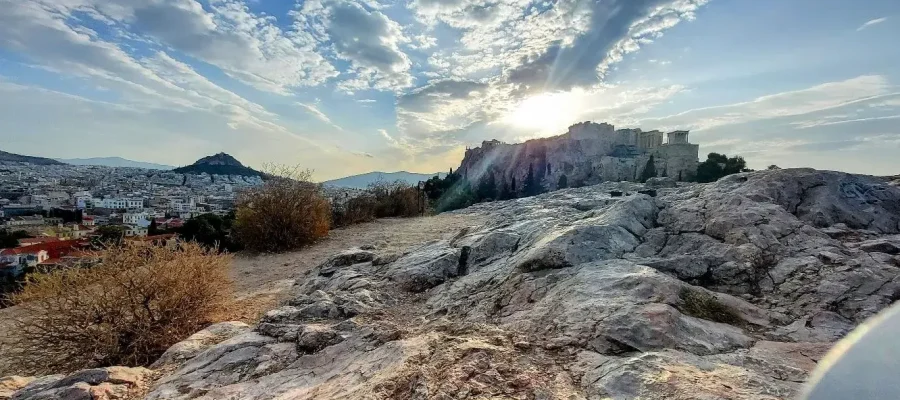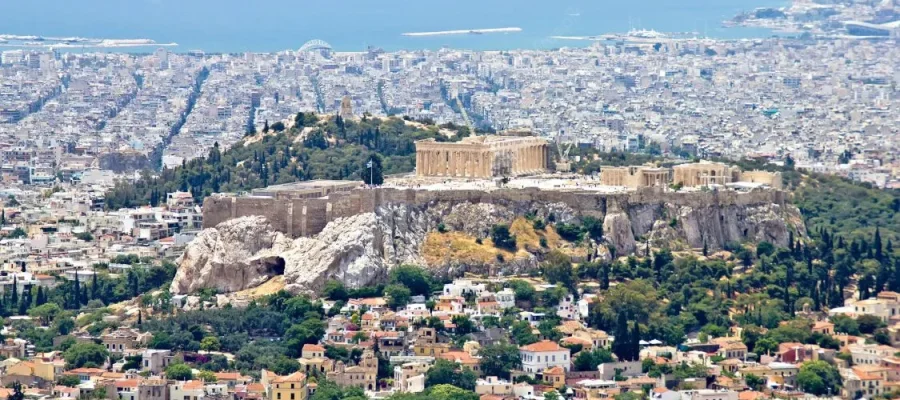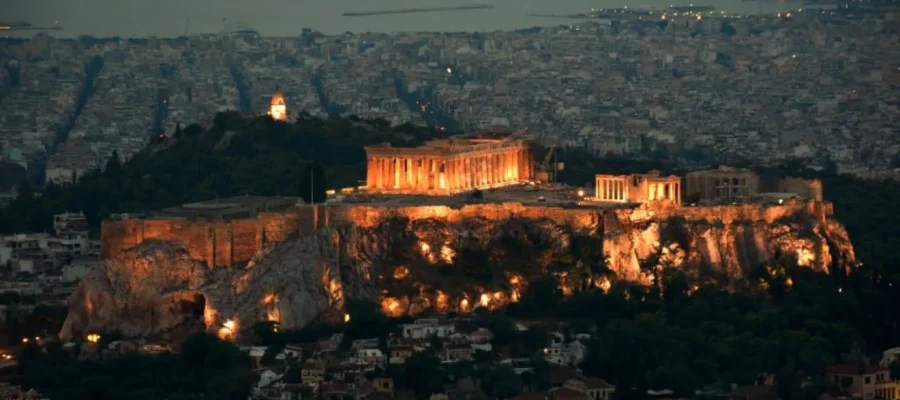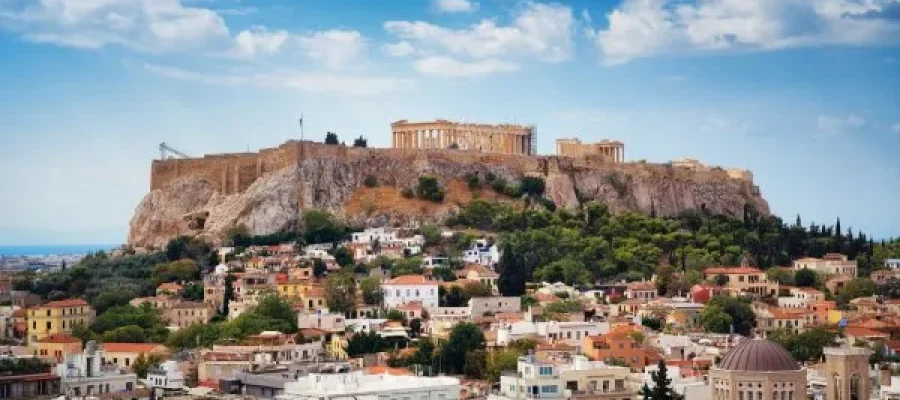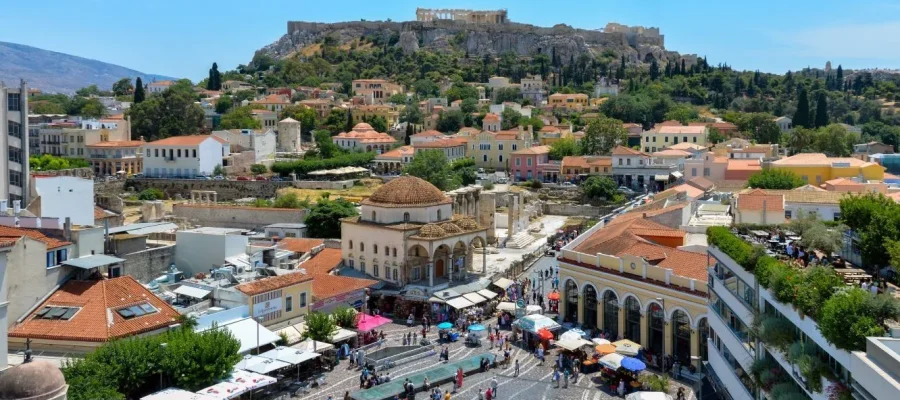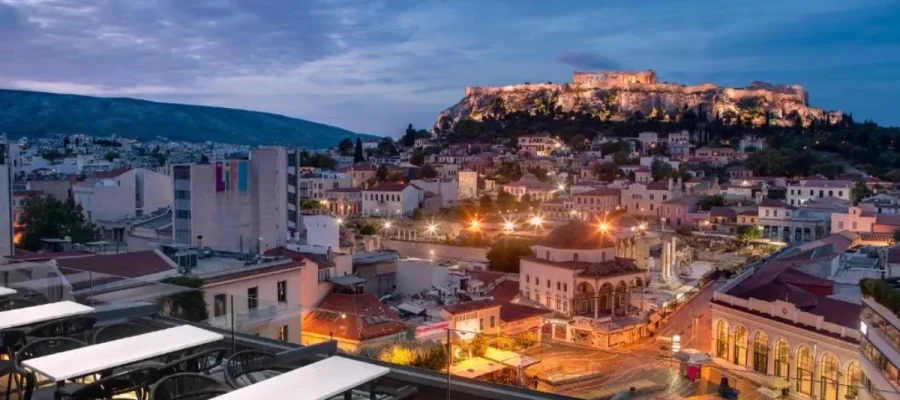
The 7 Best Places to Photograph the Acropolis of Athens

The Acropolis of Athens is perhaps one of the most photographed places in the world, certainly within Greece. You only need to look at Instagram or Facebook to see how many fantastic photos there are. But how do these people get such great photos? Well, in this post, I will show you the 7 best places to photograph the Acropolis of Athens including the best Instagram spots in Athens. I have also included a map for each one to give you the exact location and where to stand.
1. The Pnyx Hill
The Pnyx was used for popular assemblies in Athens as early as 507 BC when the city’s reforms transferred political power to it’s citizens. Just as it did almost 25000 years ago, it still looks down on the Ancient Agora of Athens, which was the commercial and social centre of the city.
The Pnyx is the very place where democracy was born. Not the democracy we know today, but nonetheless, it had it’s beginnings there.
It was the meeting place of one of the world’s earliest known democratic legislatures, the Athenian ekklesia (assembly). The flat stone platform, known as the bema, the “stepping stone” or speakers’ platform, is still visible today. This was the same platform from which noted politicians, generals, and philosophers, including Pericles, Socrates, Pythagoras, Themistocles, and Aristides spoke to the crowds.
It was protected by a defence wall built in the fourth century BC and reconstructed a century later. The new walls are made of almost solid masonry about two metres thick.
Pnyx Hill in central Athens is one of the best places to photograph the Acropolis of Athens and one of the best Instagram spots in Athens. This is the exact spot where ancient Athenians gathered to host their popular assemblies, thus making the hill one of the earliest and most important sites in the creation of democracy.
During the early 5th century, the people apparently sat on the hillside facing a speaker’s platform on the north. The seating capacity may have been anywhere from 6000 to 13,000 people.
Probably late 5th century BC, the orientation of the auditorium was apparently reversed. A stepped terrace wall was created on the north to support an artificial terrace. The people sat facing a speaker’s platform on the south.
The Pnyx was rebuilt and expanded in the 3rd quarter of the 4th century BC, probably around 345-335 BC. A massive, curved retaining wall was built (or at least begun) on the north. The southern side of the auditorium and speaker’s platform (bema) was quarried out of the natural bedrock.
Finally, in the Roman period, part of the Pnyx was used as a sanctuary of Zeus Hypsistos.
Map of the exact location to take the best photos
Learn more about the Pnyx Hill
I’ve included a video I made to help you see where the best spots for the Pnyx are. You can also learn more about Pnyx Hill in Athens on this site, including the best things to do and see, opening times, and access for those with disabilities and impairments. Just click the link Pnyx Hill.
2. Filopappou Hill
Filopappou Hill is also one of the best places to photograph the Acropolis of Athens. Also known as the Hill of the Nymphs, it is the highest summit in the south of Athens at 147m (482 ft) and one of the seven hills of Athens. It is located west of the Acropolis and provides a great view of the city, and a great place to watch sunrises and sunsets.
The hill is also home to many ancient ruins, including an amphitheatre, temples, and a theatre. The name Filopappou comes from the Greek words for “son of Pappus”, who was a famous Athenian.
Filopappou Hill has always played a decisive defensive role in Athens’ history. General, Demetrios Poliorketes built a vital fort overlooking the strategic Piraeus road in 294 BC. The Venetians bombarded the Acropolis from here in 1687.
Built between 114 AD and 116 AD, the Monument of Philopappus on the summit, after which the hill was named, was raised by the Athenians in honour of Caius Julius Antiochus Philopappus, a Roman consul. Its unusual concave marble facade, 12 m (40 ft) high, contains niches with Philopappus and his grandfather statues.
A frieze around the monument depicts the arrival of Philipappus by chariot for his inauguration as Roman consul in AD 100.
Also on the hill is the pretty Holy Church of Saint Demetrios Loumbardiaris, named after an incident in 1656.
The Ottoman commander at the time, Yusuf Aga, laid plans to fire a huge cannon called ‘Louparda’, situated by the Propylaia at the worshippers in the church as they celebrated the feast day of Agios Dimitrios. However, the night before the feast, lightning struck the Propylaia, miraculously killing the commander and his family.
The pine-covered slopes of Filopappou Hill offer a pleasantly shaded maze of paths leading through monuments marking centuries of history.
On the first day of Lent (Clean Monday), the hill is swarmed with hundreds of Athenians, who traditionally gather to fly kites.
Map of the exact location to take the best photos
Learn more abour Filopappou Hill
I’ve included a video I made to help you see where the best spots for Filopappou Hill are. You can also learn more about Filopappou in Athens on this site, including the best things to do and see, opening times, and access for those with disabilities and impairments. Just click the link Filopappou Hill.
3. Areopagus Rock
With some of the best views of Athens and the Acropolis, Areopagus Hill is one of the most popular places where locals and tourists gather to watch the sunrises and sunsets. It is also one of the best places to photograph the Acropolis.
The exact origin of the Areopagus is unclear. Before the 5th century BC, the Areopagus may have been a council of elders for the city of Athens, and membership was restricted to those who had held high public office. Or, it may have also begun almost exclusively as a murder court and judicial body.
While there is no way to be absolutely certain, it is known that murder trials seem to have been held on the Areopagus hill as early as the 7th century BC.
Areopagus Hill was probably named after the ancient god of war Ares (Mars), hence why it is sometimes called the Mars hill The Ancient Greeks believed the hill was connected to mythological events, including the first murder trial conducted by the gods. As a result, the oldest supreme court Arios Pagos of Ancient Athens was established on the hill.
It was also the centre for worship and religion for many ancient Greeks in Athens. The ruins of altars dedicated to the goddess Athena and the Eumenides, the deities of vengeance have been discovered on and around the hill.
Other major and significant archaeological findings in the area, including the remnants of a settlement, suggest that one of the oldest graveyards of Athens was located there, with tombs dating back to the Mycenaean and Geometric Periods.
The top of the hill can be pretty slippery due to the well-worn rock from many years of footsteps. However, stairs carved into the rock allow you to reach the top of the hill and enjoy the magnificent view of Athens.
Map of the exact location to take the best photos
Learn more abour Areopagus Rock
I’ve included a video I made to help you see where the best spots for Areopagus Rock. You can also learn more about Areopagus in Athens on this site, including the best things to do and see, opening times, and access for those with disabilities and impairments. Just click the link Areopagus Rock
4. Lycabettus Hill
Lycabettus Hill (also known as Mount Lycabettus or Lycabettus) reaches 277m (910ft) above Athens and is its highest hill. There are panoramic views of the city from the observation decks that rim the summit, and this is why it’s one of the best places to photograph the Acropolis.
The hill can be climbed on foot by various paths or by the easier, albeit unsteady, ride in the funicular from the top of Ploutárchou. On foot, it should take about 45 minutes.
The hill may derive its name from a combination of the words lýki and vaino, meaning “path of light”. The ancient belief was that this was the gigantic rock destined to be the Acropolis citadel, accidentally dropped by the city’s patron goddess, Athena.
The small whitewashed chapel of Agios Geórgios crowns the top of the hill. It was built in the 19th century on the site of an older Byzantine church dedicated to Profítis Ilías (the Prophet Elijah). Both saints associated with the site are celebrated here on their name days (20th July and 23rd April, respectively).
On the eve of Easter Sunday, a spectacular candlelit procession winds down the peak’s wooded slopes. The hill has a summit restaurant and café and the open-air Lykavittós Theatre, where contemporary jazz, pop and dance performances are held annually during the Athens Festival.
The Lycabettus Funicular is a funicular railway to the top of Mount Lycabettus in the Greek capital city of Athens. It was constructed in the 1960s by the Greek Tourist Organisation (EOT) and was inaugurated on 18th April 1965. The terminal stations are situated at Aristippou street, in Kolonaki, and the Chapel of St. George, near the top of the hill. Between the terminal stations, the line is entirely in a tunnel.
In 2002 extensive refurbishment was carried out, involving the replacement of the motor, the hydraulic brake unit, the electronics safety systems, the control room, and the two cars of the funicular. The railway now runs daily services, with a capacity of about 400 persons per hour.
The hill has a large open-air theatre at the top, and has housed many Greek and international concerts. Among the artists who have performed at the Lycabettus theatre included Al Di Meola, B.B. King, Bjork, Black Sabbath, Blackmore’s Night and Scorpions, Bob Dylan, Bryan Ferry, Buena Vista Social Club, Chuck Berry, Dead Can Dance, Deep Purple, Faith No More, Faithless, Gary Moore, Iron Maiden, James Brown, Jerry Lee Lewis, Joan Baez, John Mc Laughlin, Leonard Cohen, Massive Attack, Moby, Morrissey, Nazareth, Nick Cave, Nightwish, Orishas, Paco De Lucia, Patti Smith, Pet Shop Boys, Peter Gabriel, Placebo, Radiohead, Ray Charles, Slipknot, The Prodigy, Tito Puente, Tracy Chapman, UB40, Vanessa Mae, Whitesnake.
Map of the exact location to take the best photos
Learn more about Lycabettus Hill
You can learn more about Lycabettus Hill in Athens on this site, including the best things to do and see, opening times, and access for those with disabilities and impairments. Just click the link Lycabettus Hill.
5. Ardittos Hill
Overlooking the Panathenaic Stadium, Ardittos Hill is located on the eastern side of the Illysos River. The hill takes its name from the mythical local hero, Ardittos, who had the gift of resolving conflicts and quarrels with his powerful speeches.
In the past, this was the seat of the supreme court of Iliaia, which judged murder cases. The area between the Ilyssos River and the present-day cemetery (known as Agra) has been home to temples, including Pan, Artemis Agrotera, Ekate and Hera. Unfortunately, the frequent flooding of the river prevented the successful preservation of most of these temples.
Today the hill is a park covered with pines and other Mediterranean greenery. At the top of the hill is a tomb believed to belong to Herodes Atticus.
Map of the exact location to take the best photos
6. A for Athens Rooftop Bar
Right next to Monastiraki Metro Station, the 35-room boutique designer “A for Athens Hotel” offers a rooftop bar with some of the best views of the Acropolis. Day or night, it is therefore one of the best places to photograph the Acropolis of Athens and also one of the best Instagram spots in Athens.
The nightlife districts of Psirri, Monastiraki and Plaka, are a 5-minute walk.
Guests can take their breakfast on the panoramic terrace with Acropolis views. The rooftop bar is open until early morning, serving refreshments and cocktails.
Map of the exact location to take the best photos
7. Hotel Grande Bretagne (Athens) Rooftop Bar
With breathtaking views of the Acropolis, regal Syntagma Square and the Parliament, lush Lycabettus Hill or the original Olympic Stadium, the multi-awarded 5-star Hotel Grande Bretagne offers an unrivalled perspective of Athens.
Located right in the heart of the city since 1874, the multi-awarded landmark hotel is within walking distance of exclusive shopping areas, museums and the business district.
The 320 rooms and suites marry charming old-world elegance with state-of-the-art facilities with meticulous attention to detail. In contrast, the 58 suites enjoy additional benefits, including personalized Butler Service.
Map of the exact location to take the best photos
Summary of the Best Places to Photograph the Acropolis of Athens
Well, there you have it. I’ve provided you with some of the best places to photograph the Acropolis of Athens, so it’s up to you to go out there and see what you can do. Obviously, if you have any suggestions, I would love to add them here.
Thank you.



